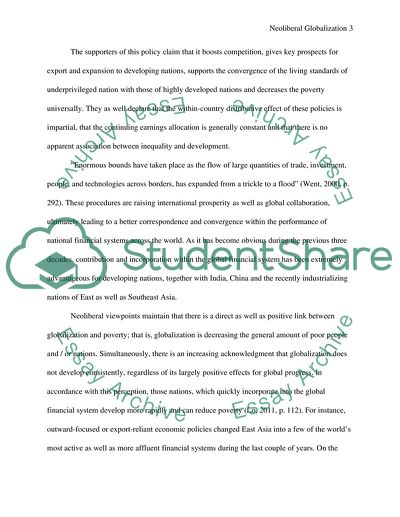Cite this document
(The Prospective Advantages of Neoliberal Globalization Statistics Project, n.d.)
The Prospective Advantages of Neoliberal Globalization Statistics Project. Retrieved from https://studentshare.org/history/1799248-1-critically-discuss-the-following-statement-neoliberal-globalization-is-a-force-for-good-and-has-lifted-more-than-half-a-billion-people-out-of-poverty-in-twenty-years
The Prospective Advantages of Neoliberal Globalization Statistics Project. Retrieved from https://studentshare.org/history/1799248-1-critically-discuss-the-following-statement-neoliberal-globalization-is-a-force-for-good-and-has-lifted-more-than-half-a-billion-people-out-of-poverty-in-twenty-years
(The Prospective Advantages of Neoliberal Globalization Statistics Project)
The Prospective Advantages of Neoliberal Globalization Statistics Project. https://studentshare.org/history/1799248-1-critically-discuss-the-following-statement-neoliberal-globalization-is-a-force-for-good-and-has-lifted-more-than-half-a-billion-people-out-of-poverty-in-twenty-years.
The Prospective Advantages of Neoliberal Globalization Statistics Project. https://studentshare.org/history/1799248-1-critically-discuss-the-following-statement-neoliberal-globalization-is-a-force-for-good-and-has-lifted-more-than-half-a-billion-people-out-of-poverty-in-twenty-years.
“The Prospective Advantages of Neoliberal Globalization Statistics Project”, n.d. https://studentshare.org/history/1799248-1-critically-discuss-the-following-statement-neoliberal-globalization-is-a-force-for-good-and-has-lifted-more-than-half-a-billion-people-out-of-poverty-in-twenty-years.


